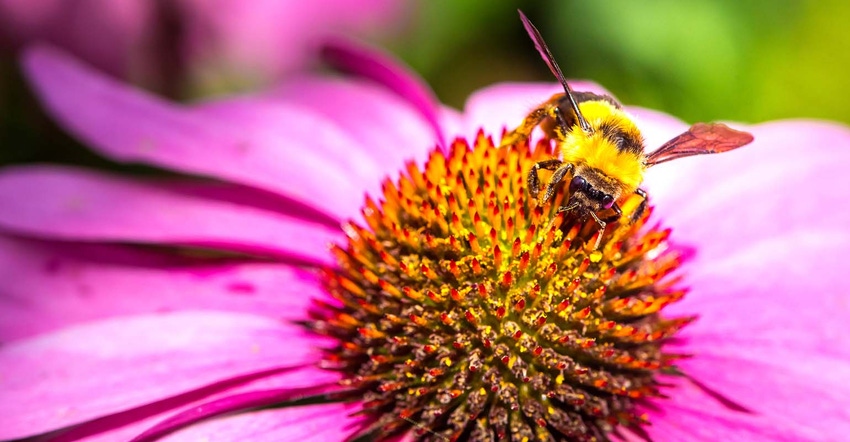July 13, 2017

USDA's Economic Research Service conducted a literature review of the effects of land use on pollinator health and examined the trends in pollinator forage quality over the last 30 years.
What did they find?
Honey bee mortality varied between 29% and 45% of colonies from 2010-11 to 2015-16, which is higher than previous decades.
Evidence points to population declines for several wild bee species including bumblebees, some butterflies, bats and hummingbirds.
Bee colonies are impacted by a variety of stresses. In spring 2015, nearly 45% of colonies were affected by varroa mites, 20% were affected by other pests and 17% were affected by pesticides.
Are the number of colonies increasing or decreasing?
Increasing as beekeepers in the United States have maintained and even increased the number of colonies over the last decade through intensive management of honey bee colonies.
The number of honey-producing colonies has increased by 9% from 2.44 million in 2007 to 2.66 million in 2015. Over the same period, the value of production of the top 10 pollinator-dependent crops grew by a weighted average of around 76%.
Give an example of an intensive management practice of a honey bee colony.
Splitting a honey bee colony and adding a new queen to one of the splits, systematic monitoring of colonies for pests and pathogens and supplemental feeding.
Do managed honey bees and native pollinators have the same vegetation needs?
Native pollinators benefit from access to nearby high-quality forage habitat that is rich in plants that provide pollen and nectar and nesting opportunities.
Managed honey bees, which are often trucked from place-to-place to provide pollinator services, need high-quality forage to improve colony survival rates.
Findings related to land use:
Forage suitability, which links pollinator forage quality to land uses and land covers, has been unchanged for 75% of the nation from 1982 to 2012.
From 1982 to 2002, the forage suitability index improved on about twice as many acres as it declined. From 2002 to 2012, the index declined on more acres than it improved.
In North and South Dakota's summer foraging grounds, the forage suitability index decline more than the national average between 2002 and 2012. The change is driven by decreases in acres with high forage suitability index and increases in acres with low forage suitability index.
Source: USDA ERS
You May Also Like




